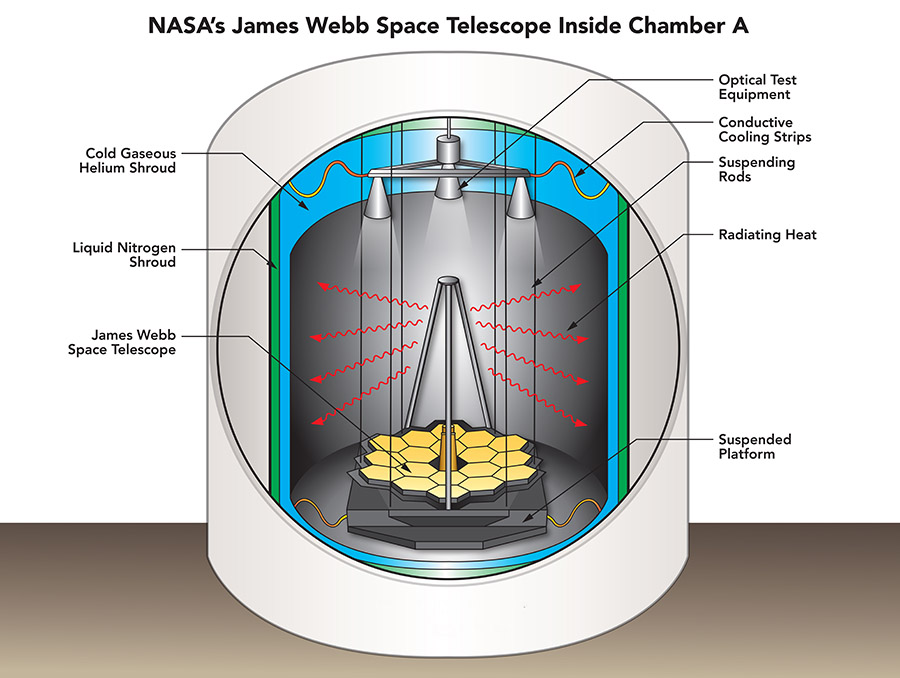The four science instruments on NASA’s James Webb Space Telescope — imaging primarily in the near- to mid-infrared wavelength — have been beaming back jaw-dropping imagery of the early universe.
But prior to launch, the James Webb Space Telescope’s optics and science instruments required extensive testing under realistic thermal conditions. This testing was conducted within the unique space simulation environments provided by NASA Johnson Space Center and Goddard Space Flight Center. Johnson Space Center’s Vacuum Chamber A underwent major refurbishment and modernization efforts in order to support the deep cryogenic, vacuum, and cleanliness requirements of this mission.

In the summer of 2017, a 100-day cryo-vacuum test — including 30 days each for cooldown and warm up — of the combined optics and science instruments (OTIS) assembly was successfully completed in Chamber A, simulating on-orbit payload temperature levels and stability for optical, mechanical, and instrument tests.
The thermal control objectives of this test required the development of a thermal model, consisting of an integrated system-level model of the payload, a detailed optical component model, and a reduced model of the test chamber environment. This last model was developed with Thermal Desktop®, contained over 84,000 nodes, and was used to create and run predictive cooldown and warmup scenarios prior to the cryo-vacuum test, respecting all imposed limits and constraints in order to ensure that hardware integrity was preserved upon transition to cryo-balance conditions and transition back to ambient temperatures. In order to calculate radiation conduction (Radks), a Geometric Math Model was generated using Thermal Desktop for both ambient temperature and cryogenic emissivity.
The reduced Thermal Desktop test model proved a viable and efficient tool to design critical thermal Ground Support Equipment and plan the test conduct, and was used to predict transient profiles, gradients, and heat flows. These thermal model predictions were used to develop cooldown and warmup procedures employing appropriate thermal control surfaces and methods to transition the OTIS payload from ambient to cryogenic test conditions and back again. The model was also used to evaluate critical limits and constraints, which could be predicted pre-test to ensure that they would be met during transitions. During the test, the model was used to project trends and provide real-time analysis. Post-test, the thermal model underwent test model correlation for engineering diagnostic purposes. Flight model validation was the sum of the correlated component models, and was run frequently during test planning.
Download the publication for more information on this work.
